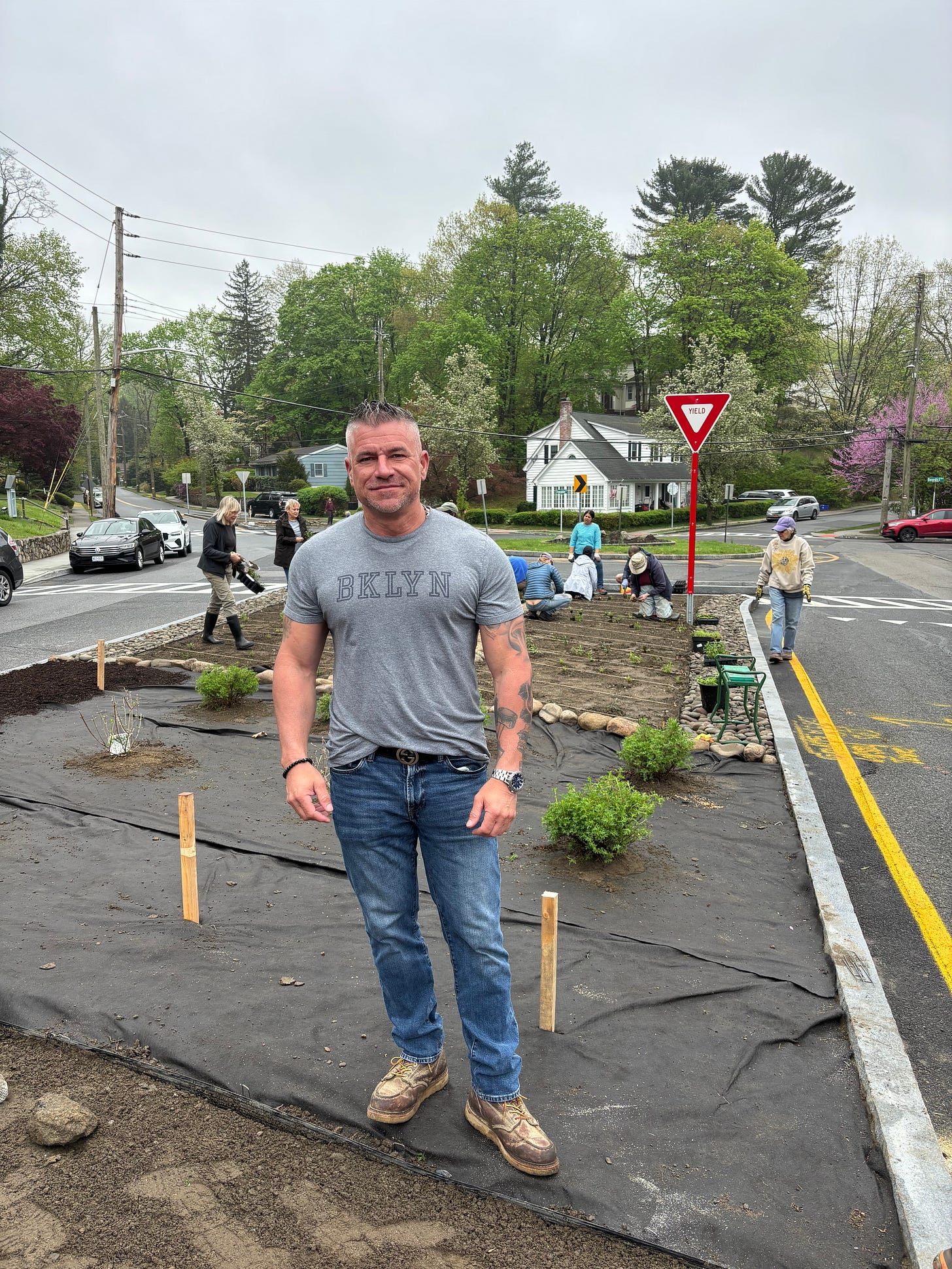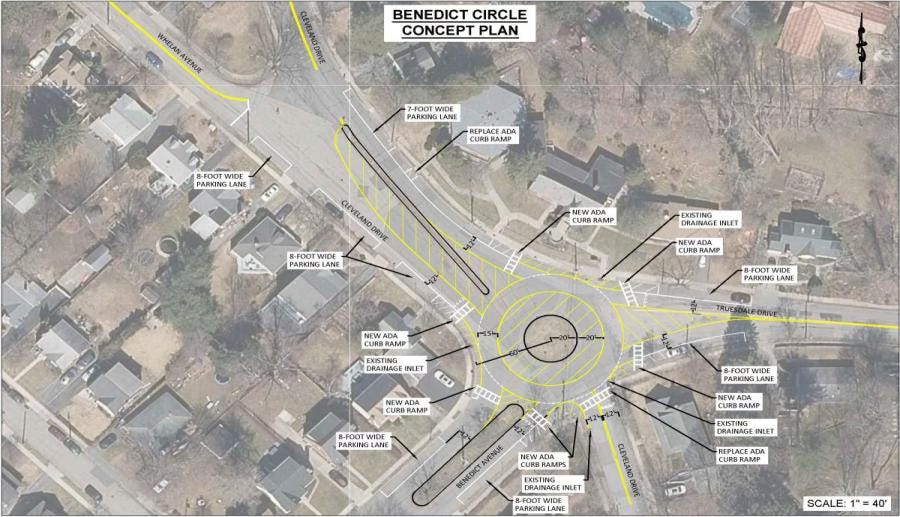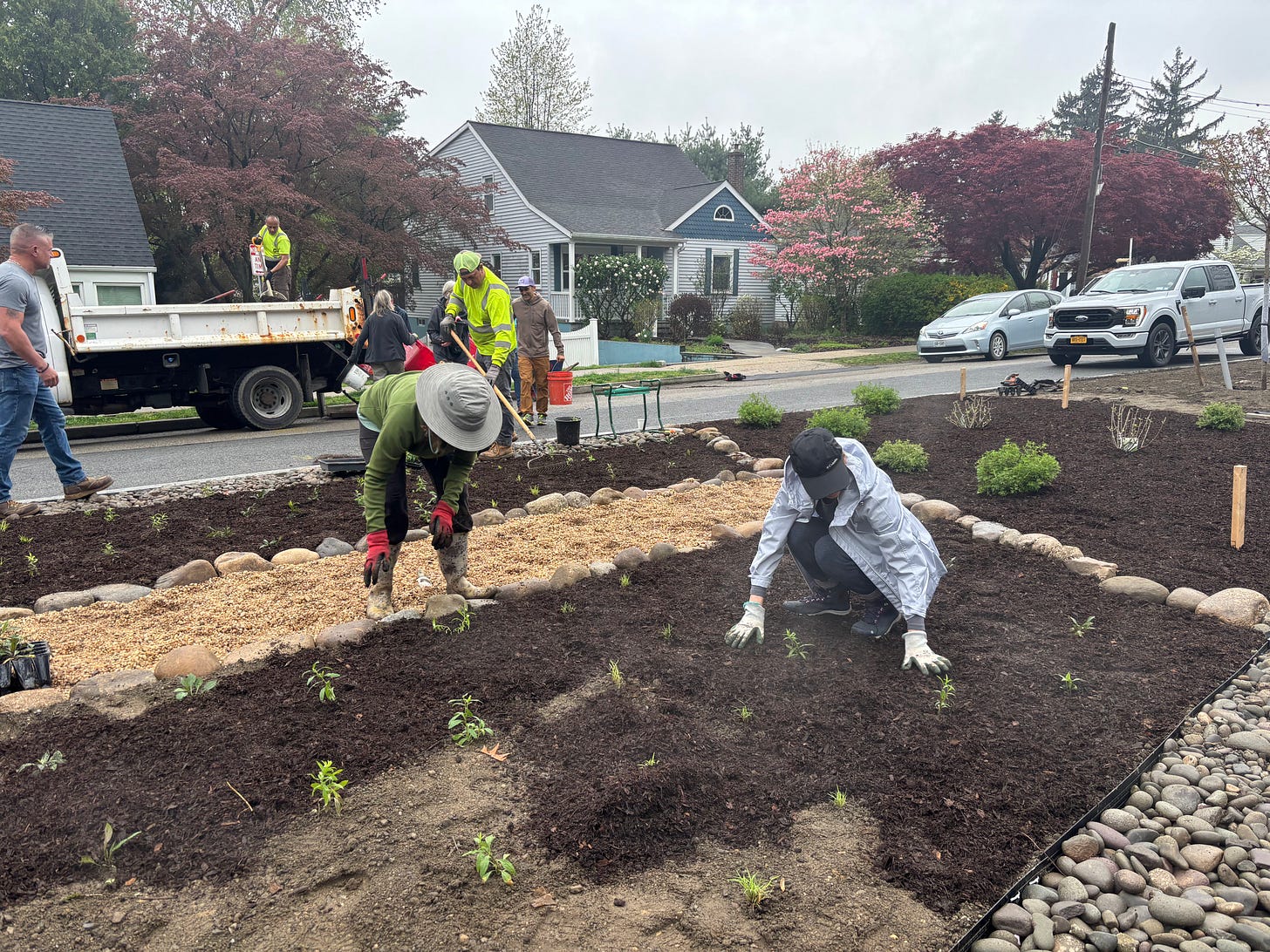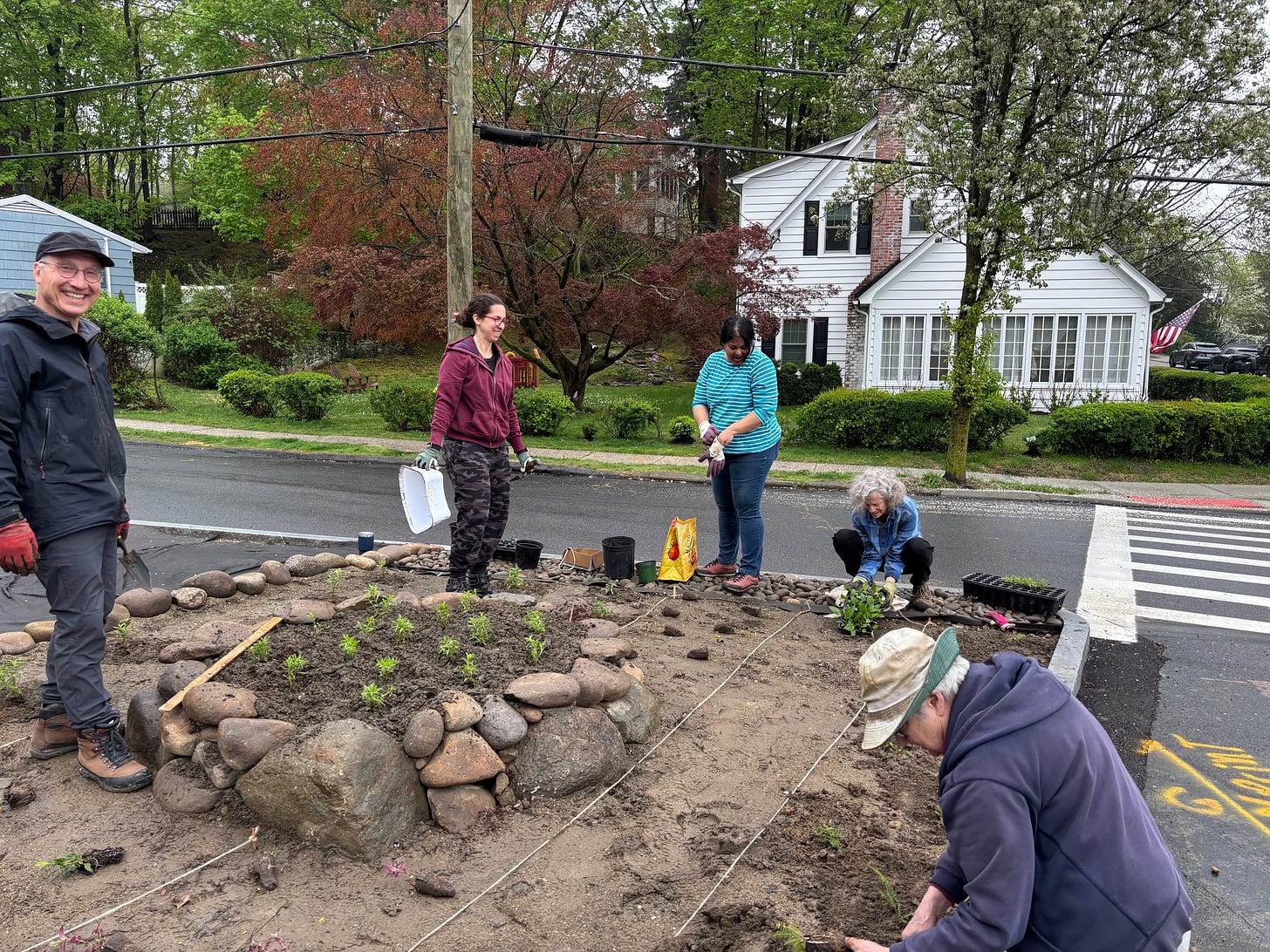People of Croton-on-Hudson, meet your new Gotwald Gardens!
Our latest beauty spot invites drivers and walkers to slow down and smell the flowers.

On September 10, 1939, the building that now houses Our Saviour Lutheran Church, at 56 Cleveland Drive, was dedicated by a small but sturdy congregation. A dozen pastors have served this flock over the years, but the one with the longest tenure was the Reverend Frederick G. Gotwald, who led the congregation from 1949 to 1970. The village named the circle at the intersection of Cleveland and Benedict after Gotwald, who later retired in North Carolina, and died in 2012.
Gotwald Circle is a busy intersection, and it was long a confusing one, as drivers tried to remember who had priority, not to mention their good road manners. So the village came up with a plan for the intersection, in collaboration with our Bicycle and Pedestrian Committee, our Department of Public Works, and traffic engineers at DTS Provident Design Engineering. The work has now been completed—although, in perhaps yet another example of “no good deed goes unpunished,” not without occasional snarky commentary from some villagers.
The intersection was designed to guide traffic into and around the roundabout, especially for folks not used to roundabouts, and also to slow it down, all the while providing some extensive landscaping and gardening opportunities to help beautify the village. The design also makes things safer for pedestrians, who now have nice bright white painted crosswalks to remind drivers about the laws of physics and the value of human life.
Croton loves controversy, and so we can expect debates about Gotwald Circle to go on for many years to come. But that’s no reason not to beautify the intersection for the benefit of all. So this past Saturday, April 26, Croton’s Garden Club, a subcommittee of our Conservation Advisory Council, swooped onto the site with a squad of volunteers to plant 15 different kinds of flora on the meridian strips.
Ably led by Garden Club co-chair Eva Thaddeus (who is also a member of the Croton Planning Board), the work was done in just a couple of hours, helped by the moist soil from an overnight rainstorm and continuing morning drizzle.
Thaddeus kindly gave us a list of what they planted, as follows:
Perennials:
Yarrow, butterfly milkweed, Bradbury’s bee balm, sweet goldenrod, asters (2 different kinds,) orange coneflowers, catmint, thread leaf coreopsis, prairie dropseed (grass,) little bluestem (grass,) woodland sage.
Shrubs:
Potentilla, Vitex, Hydrangea “Bobo.”
A few of the flowers might even bloom this year, Thaddeus told us, and all should bloom next year. By the third year, “they will reach their full size and totally fill the space,” she said, and “come into their full glory.”
We would not be surprised if eventually Croton drivers and walkers begin taking detours just to monitor this floral progress, and of course the Chronicle’s crack team of photojournalists will be monitoring the growth process closely. Who knows, perhaps the village’s latest beauty spot will grow so bounteous that drivers will not even mind if they have to slow down and smell the sweet goldenrod. And we feel confident that the Reverend Frederick G. Gotwald is looking down at his circle beneficently.

**********************************************************************************************************
To share this post, or to share The Croton Chronicle, please click on these links.
Comments policy: Please be polite and respectful at all times.










In the 1990s and 00s, a Whelan Ave. neighbor planted the land strips on her own, with no supervision or help. It wasn't until late in her residence that some young person repeatedly drove their car over the garden. It was filled with perennials and bees and other pollinators. I hate being one to recall "the good old days" as such, I just point out that nothing is new. I hope this garden is able to grow and flourish.
Love the new project! Curious as to why the plan didn’t include a path that would allow people walking south on Cleveland to enter the tip of the garden at the shortest, and safest, crossing distance. Then the walker could enjoy the entirety of the garden until they came out at the now much safer crosswalk at the roundabout.